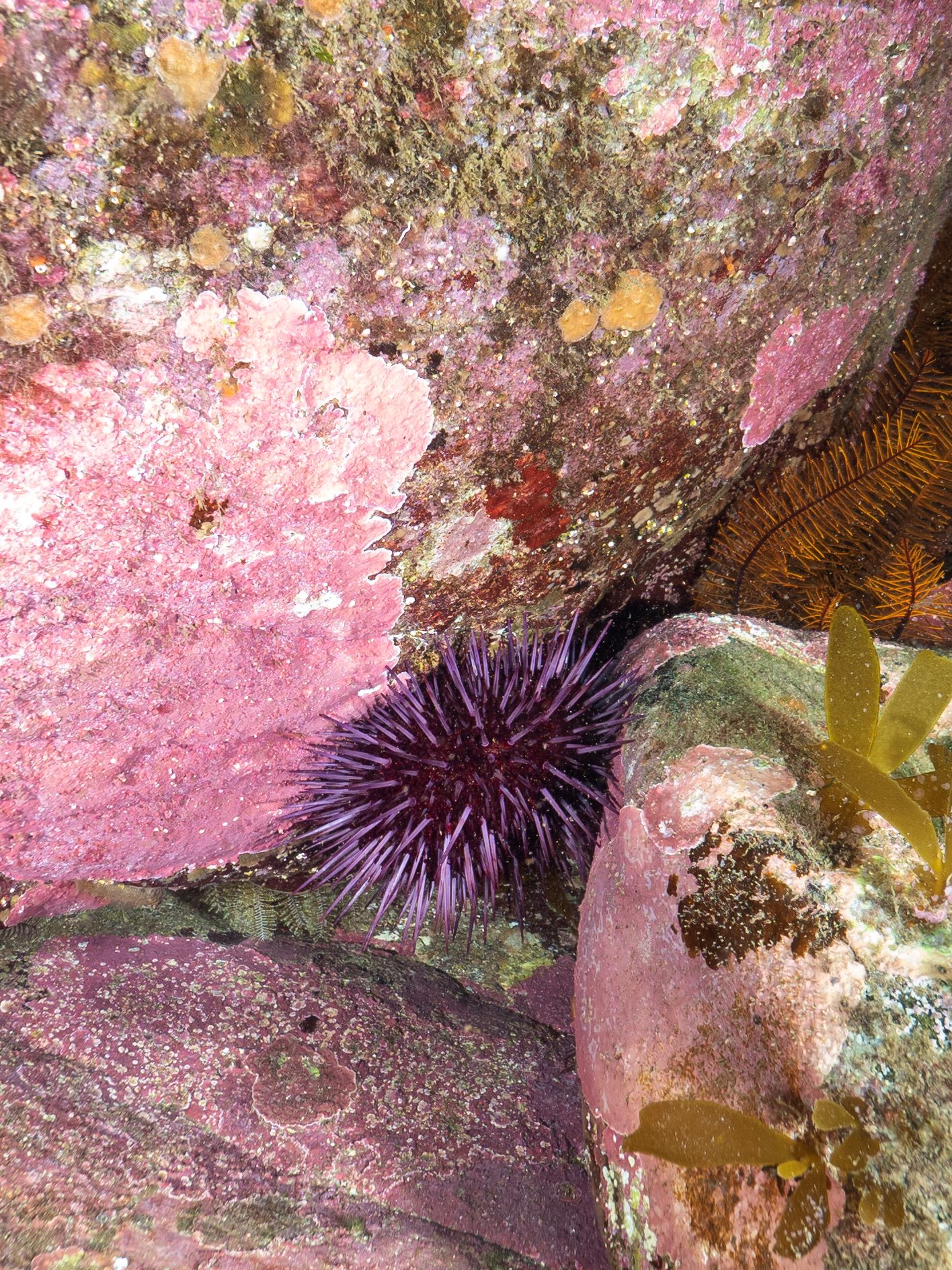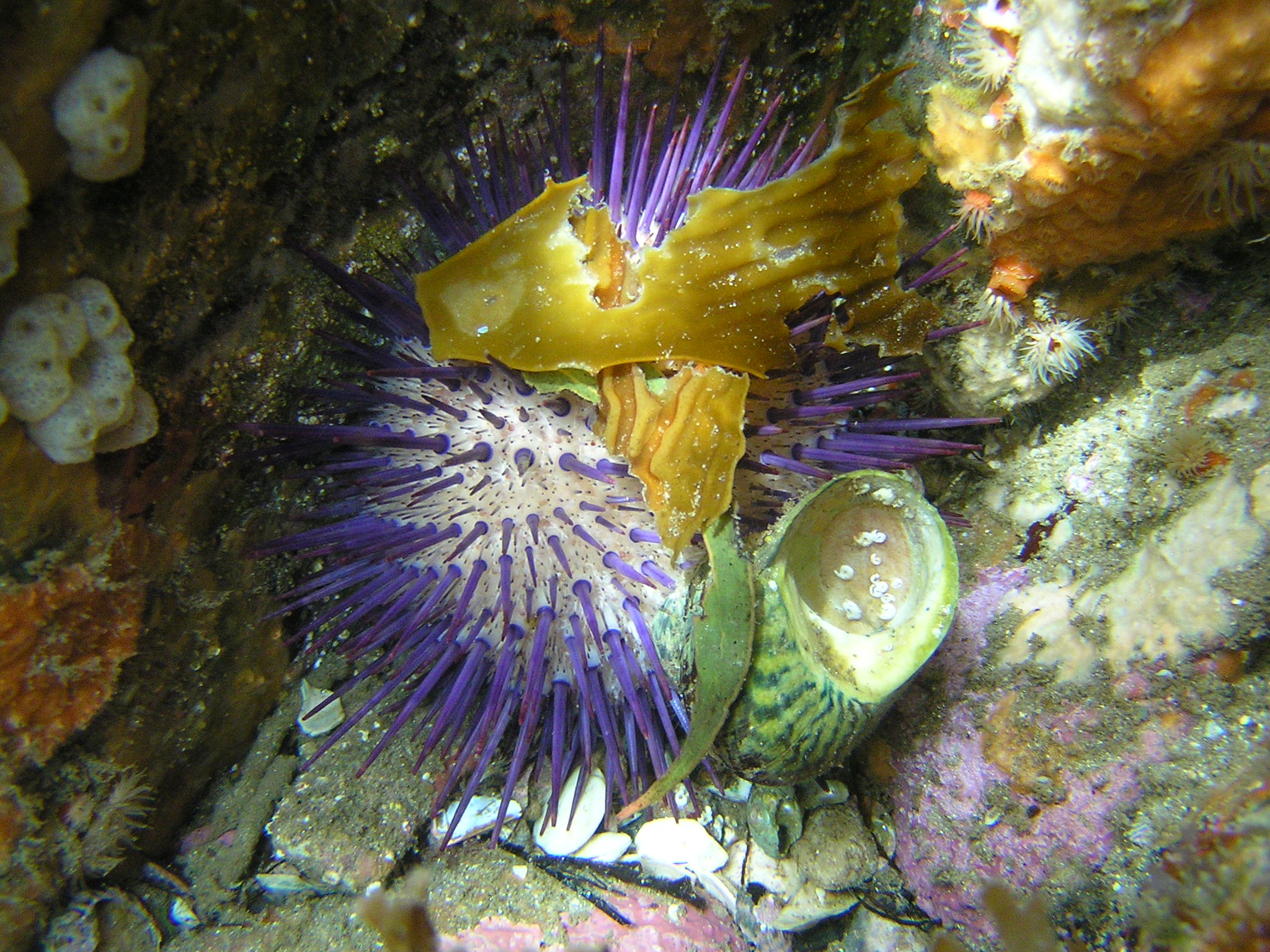Ecosystem and Habitat Interactions

Credit: Matt Testoni
By-Catch
There is no by-catch in this fishery as shortspined sea urchins are harvested by hand.
Threatened, Endangered or Protected Species Interactions (TEPs)
Interactions with threatened, endangered or protected species and the vessel or dive gear are possible although the same gear has been assessed as negligible risk in abalone fishing.

Habitat Interaction
Interaction between the habitat and fishery is limited to catch bags and considered negligible risk.
Climate Change
Shortspined sea urchin populations may be affected by declines in kelp forest, due to natural or anthropogenically induced climate change and increased resource competition with the poleward range expansion of the barren-forming long-spine sea urchin, Centrostephanus rodgersii.
Ecological Role of Urchins
Shortspined sea urchin barrens commonly occur in protected bays and estuaries around Tasmania. These barrens signify areas of low productivity and diversity due to the removal of native vegetation. The barrens provide critical habitat for the establishment of the introduced macroalgae Undaria pinnatifida sporophytes, while re-establishment of native seagrasses has been unsuccessful after 30 months in a study by Valentine and Johnson (2005) even after the removal of urchins and Undaria pinnatifida.



